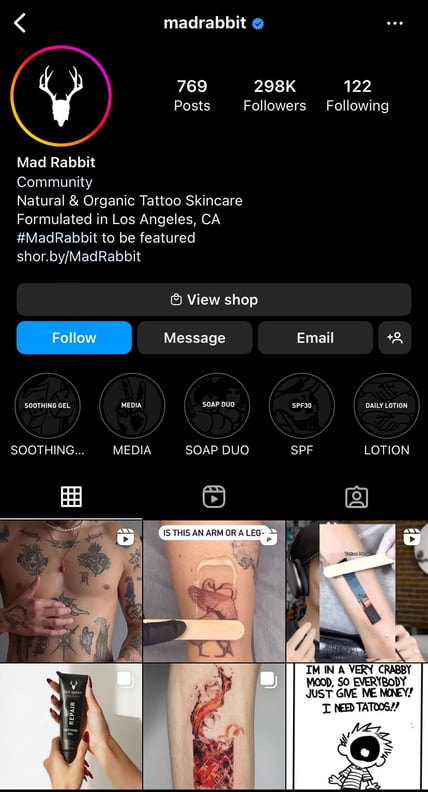The ultimate goal of social media marketing is to generate revenue, and a crucial step to generating revenue via social media is creating engagement. If your followers don’t engage with your posts, they won’t engage with your business. And a sure way to boost engagement is by fostering a tight-knit social media community.

Social media communities are incubators for brand awareness, loyalty, and trust. They’re also a dime a dozen, so marketers must refine their approach to building and leveraging them correctly.
Let’s explore more about social media communities, their benefits and challenges, and where brands will invest their resources in 2023.
Are brands investing in social media communities?
Social Media Community Benefits
How are social media communities formed?
Social Media Community Examples
Building a Social Media Community
Challenges of Building a Social Media Community
Are brands investing in social media communities?
The Hubspot Blog surveyed 1,283 social media marketers around the globe to determine which trends they leverage, the channels they use, and their plans for 2023. Here’s what we found:
Social Media Community Trends
- 90% of social media marketers say building an active online community is critical to success in 2023.
- At the time of the survey, 1 in 5 social media users joined or participated in an online community in the past 3 months.
- Instagram and Facebook are the most effective platforms for community building.
- 88% of marketers say most brands will have an active social media community around their brand in 2023.
- Facebook is used by most (67%) social media marketers but takes second place behind Instagram for engagement and ROI.
- Facebook will see significant growth in 2023, with 23% of social media marketers investing more in Facebook than any other platform, 43% increasing their investment, and 41% continuing to invest in Facebook.
- Social media marketers see Facebook in third place behind both Instagram and TikTok regarding the platform with the highest potential to grow in 2023.
- Influencer marketers see the highest ROI through Instagram.
- Instagram is used by 65% of social media marketers, coming just behind Facebook at 67%.
- 29% of social media marketers plan to invest the most in Instagram over any other platform, and 52% plan to increase their investment in the platform in 2023 — while another 39% will keep it the same.
YouTube
- 55% of social media marketers use YouTube, making it the third most popular platform among social media marketers.
- 14% of social media marketers plan to invest more into YouTube than any other platform, and 15% plan to try it for the first time in 2023.
TikTok
- TikTok, alongside Instagram, is considered a platform with the highest potential to grow in 2023.
- While just 36% of social media marketers use TikTok, marketers think TikTok is a better bet for brands to grow their audience than other platforms.
- In 2023, 53% of social media marketers will increase their investment in marketing on TikTok in 2023, and another 36% will keep investing the same amount.
Social Media Community Benefits
As I mentioned, having a large social media following is not enough; you also need an engaged community. Here are a few reasons:
1. They are vehicles for personal recommendations.
In a sense, every social media community member is a micro-influencer, sharing real experiences and opinions that can influence other members. This is worth mentioning since nearly nine out of ten consumers read reviews before buying a product.
Customers who love your brand want to talk about it. They want to share reviews and pass on advice, and communities give them a place to do that.
But what about bad reviews? As an active participant in your community, you have an excellent opportunity to resolve any issues or complaints. And since members are already invested in your brand, they’re more apt to find solutions with you.
2. They can cut costs.
Active, self-sufficient communities can become hubs for customers to ask and answer questions, which alleviates pressure on customer support teams. They can also reduce support costs — one study found it was 72% cheaper to answer a question via a community than to submit a ticket to a support team.
Communities can also reduce your ad spending. In 2022 ad spending in the US was predicted to cross the $200 billion mark. Brands with active communities can spend less on social media advertising because they can reach customers in an owned space for free.
3. They create active participation with your brand.
We’ve all heard the statistic — it’s cheaper (arguably easier) to retain customers than convert new ones. This is why brand advocacy and retention are critical to any marketing strategy.
Brands can strengthen relationships with community members by encouraging active participation — with polls, surveys, contests, and user-generated content, to name a few. In essence, what was once a transactional relationship is now an active conversation. And every active engagement brings customers closer to your brand.
4. They offer insight into your consumers.
The most productive communities are strategically designed to spark conversations. You can take full advantage of these conversations by tracking common complaints, ideas for improvement, and unique ways they use your products to solve problems.
Remember to let your community know when you make a change based on member feedback. People love to know you’re listening and taking their suggestions seriously.
How are social media communities formed?
Social media communities are formed over shared interests, hobbies, goals, and topics that encourage participation and build connections. A company can build a social media community that centers around an interest that is relevant to its brand.
With that said, let’s explore a few examples of social media communities.
Social Media Community Examples
1. First Coast News Weather Watchers
Florida TV news station First Coast News started a social media community via Facebook called First Coast News Weather Watchers. The community is hosted on Facebook Groups and centers around viewers’ shared interest in local weather and meteorology.
Users ask questions about local weather within the community, share photos and videos of weather phenomena, and speak to First Coast News meteorologists. First Coast News will often take photos and videos shared in the group and feature them in live broadcasts.
2. Mad Rabbit
Mad Rabbit is a tattoo skin relief care brand that started a thriving social media community on Instagram that is focused on the subculture of tattoos. Followers of the company’s page share and receive information regarding tattoo aftercare and artistic creativity. Mad Rabbit’s Instagram page also frequently collaborates with tattoo influencers who help the brand further engage with users.
3. Official Crunchyroll Discord
Anime licensing and streaming company Crunchyroll started its own social media community on Discord. The community is a space for anime fans to discuss their favorite shows and anime-related content.
Building a Social Media Community
You’re probably familiar with the adage, “Rome wasn’t built in a day.” The same is true of social media communities.
Here are a few tips for building a thriving community:
1. Remember that communication = community.
If you want to build a thriving community, you can’t expect your customers to always start the conversation. You must do the heavy legwork to post content, ask questions, respond to comments, and keep communication lines open.
While you don’t need to be the center of the conversation, your members should know you’re there.
2. Focus on the audience first and brand second.
Social media communities are valuable tools for self-promotion — but if that’s all you’re using them for, you’ll eventually drive customers away.
Effective communities provide value. They educate, entertain, and solve problems for the audience. In other words, if you want to build a real sense of community, you need to provide value with the content you create or share.
Check out how Glow Recipe, a skincare brand, provides value by offering tips for healthy skin while subtly promoting their products:
Image source
3. Feature user-generated content.
A great way to boost engagement within a community is to encourage user-generated content. This is any content — like text, videos, or reviews — that your members create, which you can then share across your social communities.
Peloton does an excellent job featuring user-generated content by highlighting customer stories and fitness milestones. Not only does this give the audience a voice, but it also encourages members to share their stories and testimonials — effectively fueling word-of-mouth marketing.
4. Make your community findable.
Building a community is almost impossible if people aren’t aware it exists. Here are a few ways to spread the word:
-
Embed social icons on your website
-
Invite family, friends, and colleagues to follow and share your community
-
Use hashtags to expose your content to new audiences
-
Cross-promote your community on different channels
-
Run exclusive giveaways or discounts for community members
5. Don’t let your community collect dust.
Consistency is an important ingredient in successful social media communities. If you let your accounts collect dust, members will abandon ship. Creating a content calendar and publishing schedule is a good idea when planning ahead. And if your brand is juggling various platforms, check out HubSpot’s social media management tools.
Challenges of Building a Social Media Community
Running a social media community is similar to hosting a party — you’re in charge of the entertainment, creating a pleasant atmosphere, and keeping conversations friendly. That’s a lot of responsibility. Luckily, you’re also in control of the guest list.
When it comes to managing your members, start by establishing clear rules and guidelines for your community. This deters any troublemakers from joining and helps prevent future conflict.
For example, Facebook offers a variety of customizable rules that users have to accept before joining a Facebook Group. This is one way to pre-moderate a group without doing any work. Check out the rules below:
The next step is to follow through. When you see members veering from community guidelines, take appropriate action — whether that’s sending a private message to a user or removing them altogether. This alerts other members that you care about the culture in your group.
To help with this process, you may want to designate someone on your team to moderator your community. Or, hire a community manager or online moderation partner such as Hive Moderation or SupportNinja.
Another challenge is measuring the ROI from your community. In other words, are your community-building efforts paying off? For instance, you may have high engagement levels in your community, but your conversion rate is stuck at 0%.
Before doing anything else, ask yourself — how do I want my community to contribute to my businesses? Is it customer engagement? Retention? Product adoption?
Next, you’ll want to identify a few metrics to measure your goals. They should be community-specific and directly related to community activities, such as click-through, sign-up, or engagement rates.
You can take this one step further by tracking the same KPIs for both community members and non-members and then comparing the performance between the two. For instance, you may discover a 30% higher product adoption among community members than non-members.
Final Thoughts
By building a social media community, you can turn transactional relationships into meaningful ones and offer a place for customers to share, collaborate, learn, and provide feedback. But building one is no easy feat, so determine your goals, develop a strategy, and get ready to start the conversation.





![Download Now: The State of Social Media Trends [Free Report]](https://no-cache.hubspot.com/cta/default/53/3dc1dfd9-2cb4-4498-8c57-19dbb5671820.png)





